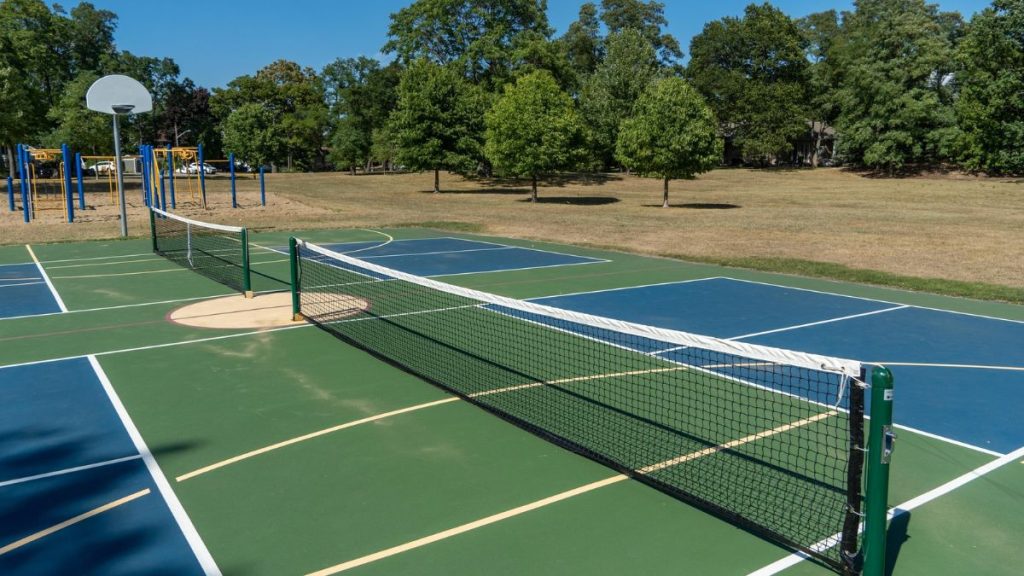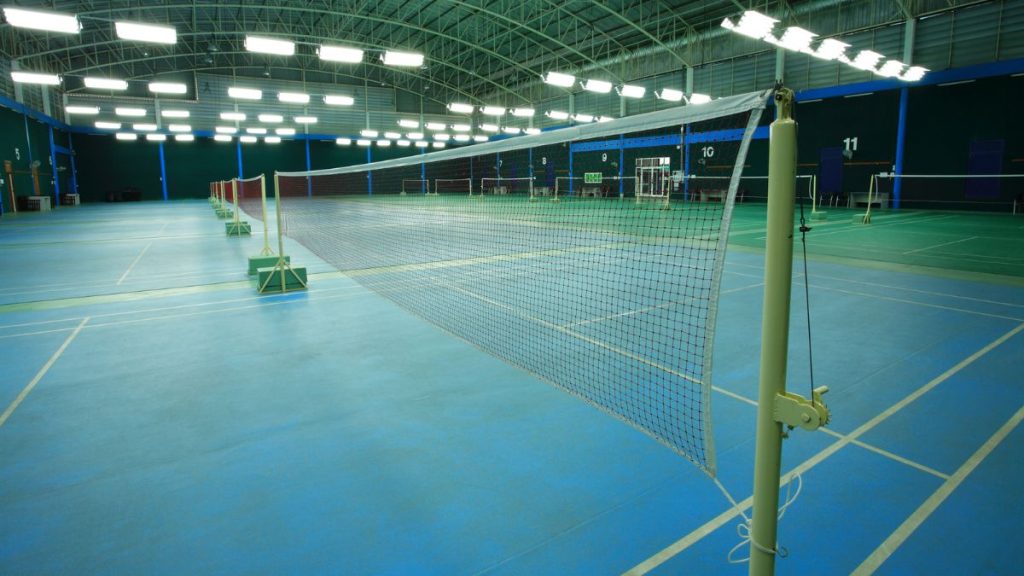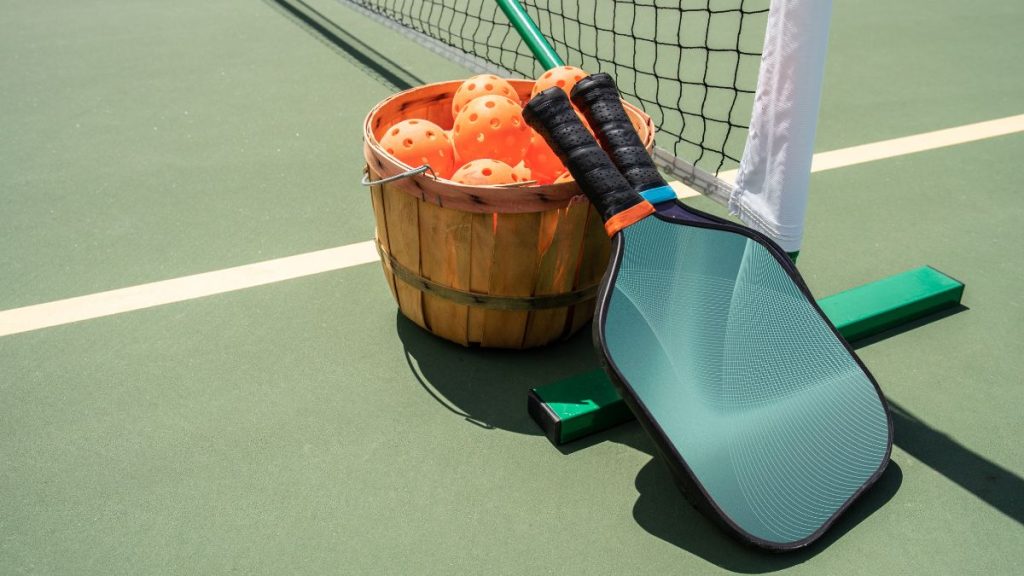Due to the growing popularity of pickleball, more and more players are now looking for places where they can play. You could use tennis courts or any space as a temporary solution. All you have to do is tape your own pickleball court.
When searching for a particular area, be sure that it has a dimension of 30 x 60 feet. If you can find a larger space, you can set up two or more courts. It would be great if you could use a badminton court since they have the same size as a pickleball court. All you need to do is put some tape on the NVZ lines, and you can instantly have a pickleball court.
You must find unused areas and avoid putting some tape on private properties without permission. You could visit the space several times and only proceed with taping down the court if you feel that you are not disturbing other people. So, how much tape is needed to line a pickleball court?
For every pickleball court you create, you will need at least 198 feet of tape. Although most people use blue painter’s tape in marking courts, it is greatly recommended that green Frog Tape should be used since it can stick better to the court, and there won’t be any residue left after removing the tape.
Additionally, green Frog Tape will not create any confusion with white tennis court lines. Players can easily get used to recognizing the green lines. Blue painter’s and yellow Frog Tape can quickly detach from the courts. You must avoid using duct tape since they are very expensive and can destroy the surface underneath once removed.
Knowing how to tape a pickleball court is important, especially if you are trying to create your own court or you want to convert a tennis court into a pickleball court. Below is some important information you need to know about how much tape for a pickleball court, what kind of tape you use, and many more.
How Wide are the Stripes on a Pickleball Court?
You need to tape several lines on a pickleball court, such as the sidelines, baselines, centerline, and non-valley zone. Sidelines refer to the lines that run along the length of the court. Baselines are the lines parallel to the net and located at the court’s end. The centerline is the line that divides the court, running from the center of the baseline to the non-valley zone.
Non-volley zone is the area that runs 7 feet from the net on both sides. When taping down these areas, the width of the tape can either be 1 inch or 2 inches, depending on how much you want to spend. Although in baselines and non-volley zones, you should use 2 inches wide tape.
What Kind of Tape Do You Use for Outdoor Pickleball Court?
If you are looking for something a bit sturdier than the standard court tape, the best option is the Heavy-Duty Court Tape. This tape is 2-inches wide, and each roll has a length of 200 feet, which is perfect for taping down an entire pickleball court. The Heavy-Duty Court Tape is made of resilient polyethylene backing. It has a vibrant orange color, making it more noticeable. The synthetic rubber adhesive of the tape can easily adhere to the court.
The Heavy-Duty Court Tape can be attached to almost any type of surface. However, it works best on surfaces free from dust, powder, oil, and other small particles. Hence, you should sweep and clean the court thoroughly before applying. However, some residue might be left once the tape is removed, just like any other bonding agent.
That is why it is recommended that you should test this product in a small area of the surface before making any application. This can help in determining its ease of removal. Check its technical specifications to know more about removing the tape. If you want longer-lasting outdoor tape, you can use Outdoor Cloth Tape.
How Do You Tape a Pickleball Court?
Wherever you want to create your own pickleball court, it is important to accurately tape it down so you can have a proper game. The following are some of the things that you need:
- Large Chalk Stick
- 3 pcs of 25 feet tape measure. Although using one is fine, it will be harder for you to get the proper angles.
- Pickleball Net
- 1 roll of 2 inches wide Outdoor Pickleball Court Tape. If you can’t find one, you can use the gaffer’s tape but be sure to have sufficient rolls that can fit an entire court, which is about 198 feet. Although you can also use duct tape, it can be more challenging to use and require more maintenance.
- Additional people to help you.
- Rubber Mallet (optional)
- Broom (optional)
Steps on Taping Down a Pickleball Court
First, determine where you want to set up your pickleball net. Put some markings at the center of the net and extend about 10 feet towards the post on the side. Use the chalk and put some markings on the two sides’ ground. This will be the sidelines of the court. Make sure that the distance between your markings is exactly 20 feet.
- Prepare the surface by sweeping it thoroughly. Ensure the surface is free from dust, sand, and debris. This way, the tape can adhere effectively to the surface and last longer.
- From the center sideline, extend your tape measure to 22 feet toward your baseline. Lock your tape measure and leave it there.
- From the end of the sideline, extend your tape measure to 20 feet across to create your baseline. Make sure that this is perpendicular to the first one. Lock the tape measure and leave it there.
- Using the third tape measure, create the other sideline. Move to the other sideline where you put chalk markings. Extend your tape measure to 22 feet, and make sure that this is parallel to your first tape measure.
- Ensure the three tape measures are straightened to form right angles at the baseline. All three tape measures should be locked to their proper lengths so you can have parallel lines. The outer boundary of the sidelines should measure 20 feet apart.
- Use chalk and trace the outer boundaries of your tape measures. This will be used as a reference for your tape, so it doesn’t matter if it’s not perfect. Don’t forget to put some markings at the center of the baseline at 10 feet.
- After tracing the baseline and the sidelines, transfer your baseline tape measure upwards so that it is positioned just above the 7 feet markings on the sideline tape measures, creating your kitchen line or non-volley zone. Now, use your chalk and trace the outer boundary of the tape measure and put some markings at the center of the line, which is exactly 10 feet.
- Now, it’s time to apply your tape. Be sure to lay the court tape within the chalk lines. In this way, the outer border of the court tape is in line with the chalk markings. Put some court tape on the two outer lines, the non-volley zone line, and the baseline. Finally, connect the two center markings you make on the baseline and the NVZ line. This is done to isolate the back of the court.
- Do this on the other side. After you are done with your court, it’s time to mark the point where the net should be placed.
- Use a rubber mallet to strengthen the tape and ensure that it is securely attached to the surface. This is optional, you can do this if you want to. Walking along the tape can also help in making it stick.
How Do You Line a Pickleball Court on a Tennis Court?
You will need chalk and tape if you want to convert a tennis court into a pickleball court. If you are not the owner of the tennis court, then you should check the integrity of the tennis court. Avoid creating any permanent marks that can damage the markings of a tennis court. For making temporary lines, you can use chalk and tape. Be sure that your tape can strongly stick to the surface to ensure that it will stay in its position.
Aside from court tape, you can also use electrical tape, vinyl floor tape, or masking tape. All of these can remain in place for a longer time. Instead of using chalk, you can also use lumber marking crayons. Most often, one roll of tape can cover the entire court. Just to be sure, you can purchase at least two rolls of tape and two chalks.
Conclusion
Now you already know how much tape for a pickleball court is needed, it’s time for you to build your own pickleball court and enjoy the game with your friends and family.




